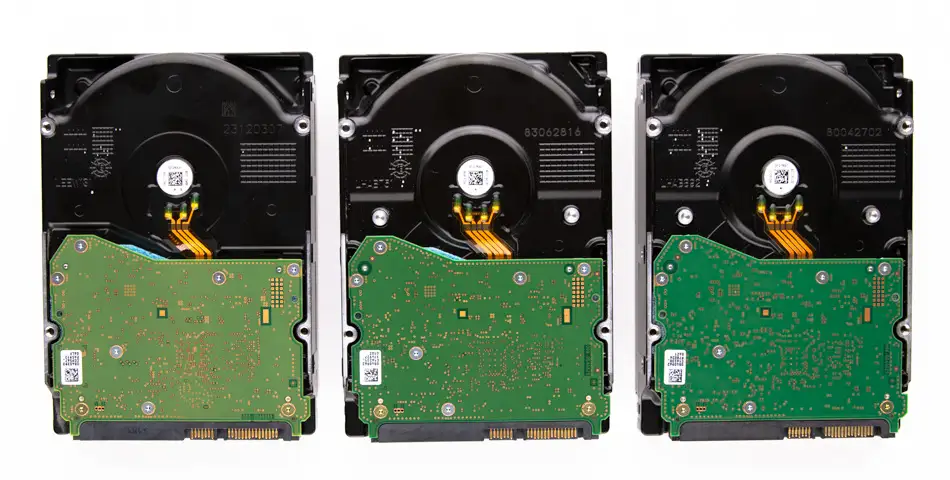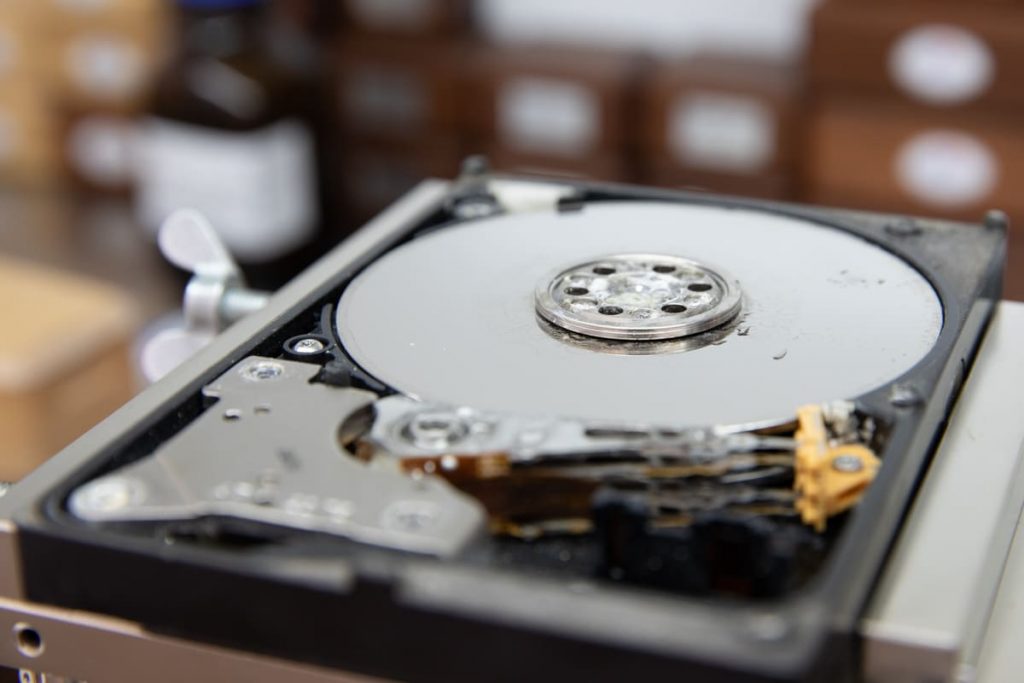Storage Area Network (SAN) is a dedicated, high-speed network that connects multiple storage devices with servers, enabling centralized storage management. It facilitates efficient data sharing and access across multiple systems while ensuring stringent security measures for critical data. Whether it is customer data, transaction records, or intellectual property, businesses need to store, access, and protect their data at all times. That is where storage area networks (SANs) come into the picture. In this blog, our team will explore what SANs are, how they work, and their benefits.
What is Storage Area Network (SAN)?
A storage area network (SAN) is a dedicated high-speed network that connects multiple servers to a pool of shared storage devices such as disk arrays, tape libraries, or solid-state drives (SSDs). SANs enable multiple servers to access the same storage devices simultaneously, enabling efficient and scalable storage management. Large enterprises and data centers that require high-performance storage solutions typically use SANs.
How Does a SAN Network Work?
A SAN consists of three main components: servers, storage devices, and the SAN fabric. The servers are connected to the storage devices via the SAN fabric, a dedicated network that provides high-speed data transfer between servers and storage devices.
The SAN fabric is typically designed as a redundant, fault-tolerant architecture, ensuring that data can be accessed and stored without interruption. The SAN fabric consists of switches and host bus adapters (HBAs). SAN switches are used to connect servers and storage devices, while HBAs are used to connect servers to the SAN fabric.

SANs support multiple protocols for data transfer, including Fibre Channel (FC), iSCSI, and Fibre Channel over Ethernet (FCoE). Fibre Channel is the most common protocol used in SANs and provides high-speed data transfer rates of up to 16Gbps.
iSCSI is a protocol that enables SANs to run over Ethernet networks, making SANs more affordable and easier to manage. FCoE is a protocol that enables Fibre Channels to run over Ethernet networks.
Benefits of Storage Area Networks
Improved Performance and Availability
SANs provide high-performance storage solutions enabling multiple servers to access the same devices simultaneously. This reduces data bottlenecks and allows faster access to data, improving application performance. SANs are also designed with a redundant, fault-tolerant architecture that ensures data is always available, even in a hardware failure.
Scalability
SANs are highly scalable and can easily accommodate growing storage needs. As storage capacity requirements increase, additional storage devices can be added to the SAN without disrupting data access or availability. This makes SANs an ideal solution for large enterprises and data centers that require flexible and scalable storage solutions.
Centralized Management
SANs enable centralized management of storage resources, making it easier to provision, allocate, and manage storage devices.
Administrators can manage storage resources from a single console, reducing the time and effort required to manage storage devices.
Improved Data Protection
SANs provide improved data protection by enabling the use of advanced storage technologies such as RAID (Redundant Array of Independent Disks) and snapshots. RAID provides redundancy by storing data across multiple disks, protecting against data loss in the event of a disk failure. Snapshots enable administrators to create point-in-time copies of data, providing a quick and efficient way to recover from data corruption or accidental deletion.
Causes of SAN Data Loss
While SANs are designed to be reliable and robust, data loss can still occur due to various reasons. Here are some of the most common causes of data loss on SANs:
Hardware Failure
One of the primary causes of data loss on SANs is hardware failure. SANs are made up of numerous components, including storage devices, controllers, and switches, all of which can fail due to a variety of reasons. For example, hard drives can fail due to mechanical or wear and tear issues, while controllers and switches can fail due to power surges or other electrical problems.
Human Error
Human error is another common cause of data loss on SANs. Mistakes such as accidental deletion, overwriting files, or misconfiguration of the storage system can lead to data loss. In some cases, administrators may inadvertently format or initialize the wrong volume, causing all data to be lost.
Software Corruption
Software corruption can also lead to data loss on SANs. This can occur for various reasons, such as firmware or operating system bugs, virus or malware infections, or incorrect software updates.

Software corruption can sometimes happen due to problems with the SAN’s drivers or firmware.
Natural Disasters
Natural disasters such as floods, fires, earthquakes, and hurricanes can cause significant damage to SANs, leading to data loss. Even if the disaster does not directly affect the SAN, power outages or network connectivity issues can still result in data loss.
Power Outages
Power outages or surges can also cause data loss on SANs. Power outages can cause the SAN to shut down improperly, leading to file corruption and data loss. In addition, power surges can cause damage to the SAN’s hardware components, leading to failure and data loss.
Data loss can occur on SANs for various reasons, and it can significantly impact your business operations. If you experience data loss on your SAN, contact a professional data recovery service like PITS Global Data Recovery Services for immediate assistance.
Benefits of Our Services
We understand the critical importance of data for your business operations. We offer professional recovery services for Storage Area Network (SAN) systems to ensure that your business can continue operating efficiently despite data loss.
Our team of experts is trained and experienced in handling SAN systems from various manufacturers, including Dell, EMC, HP, IBM, NetApp, and others. We use cutting-edge technology and advanced techniques to recover data from storage systems that have suffered physical or logical failures.
Why Choose Us
PITS Global Data Recovery Services delivers premium data recovery solutions with a focus on quality and individual care for every case. As a DUNS-verified business, we are committed to excellence, ensuring 100% customer satisfaction. Our tailored service options suit a range of recovery needs and budgets. For critical situations, we offer emergency data recovery, restoring data quickly and reliably without compromising quality.

If you’re facing a data loss situation, don’t hesitate to contact us. Our 24/7 data recovery services are available to you, 365 days a year. Let us help you recover your precious data today.

We start the recovery process with a risk-free evaluation. Our technicians estimate reasons for data loss and the level of damage. Based on it, we select the most suitable recovery strategy.

With years in the data recovery industry, our company supports the highest customer satisfaction rate. We do everything to provide a positive experience for our clients.

During our remote customer file verification session, you will thoroughly review all necessary documents and records to ensure accuracy and compliance.

We offer data recovery services from over 50 locations across the US. This means that no matter where you are located, you can access our services to recover the data.

With our certified data recovery services and 99% success rate, we are confident that we can recover your precious data and get you back up and running in no time.
We understand that data loss can occur anytime and every moment without access to critical data, which can be costly for your business. That is why we offer emergency recovery services for SAN systems, providing our clients with immediate access to our team of experts.
Our emergency recovery services are available 24/7 and are designed to minimize downtime and get your business operations up and running as soon as possible. We work quickly and efficiently to recover your data so you can return to business immediately.
At PITS Global Data Recovery Services, we are committed to providing our clients with the highest service and support. Whether you need recovery services for a small SAN system or a large-scale enterprise storage solution, our team of experts has the knowledge and experience to do the job.
Contact us today to learn more about our SAN recovery services and how we can help your business recover from data loss. Fill out the form below to get in touch.
Frequently Asked Questions
What is a SAN (Storage Area Network)?
A Storage Area Network (SAN) is a specialized network architecture designed to provide high-speed data storage and retrieval for multiple servers or computer systems. It is a dedicated network that connects servers and storage devices, allowing them to communicate and share data efficiently.
How does a SAN work?
A SAN typically consists of three main components: servers, storage devices, and a network infrastructure. The servers are connected to the storage devices through the SAN network, which is usually implemented using Fibre Channel, iSCSI, or Fibre Channel over Ethernet (FCoE) protocols. The storage devices store and manage the data, while the network infrastructure ensures the reliable and fast transmission of data between servers and storage.
What are the benefits of using a SAN?
- Improved performance: SANs use high-speed connections and dedicated networks, enabling faster data access and reduced latency.
- Scalability: SANs can be easily expanded by adding more storage devices or servers, allowing for flexible growth as data storage requirements increase.
- Centralized management: With a SAN, storage resources can be centrally managed, making it easier to allocate, monitor, and control storage capacity.
- Data availability and reliability: SANs often employ redundancy and data protection mechanisms like RAID (Redundant Array of Independent Disks) to ensure data availability and protect against disk failures.
- Simplified backup and disaster recovery: SANs facilitate efficient data backup and recovery processes, enabling organizations to implement robust disaster recovery strategies.
What types of organizations benefit from using SANs?
SANs are commonly used by organizations that require large-scale storage and quick access to data. This includes businesses with high data storage demands, such as enterprises, data centers, cloud service providers, and organizations dealing with mission-critical applications or databases.
Are there any alternatives to SAN?
Yes, there are alternatives to SANs, depending on the specific requirements of an organization. Some alternatives include Network Attached Storage (NAS), which provides file-level access over a network, and Direct Attached Storage (DAS), where storage devices are directly attached to individual servers. Cloud storage solutions are also increasingly popular as an alternative or complementary option to traditional SAN architectures.
Can a SAN be combined with other storage solutions?
Yes, organizations often adopt hybrid storage architectures that combine different storage solutions based on their specific needs. For example, a SAN can be used for critical data requiring high performance and reliability, while less critical data can be stored on NAS or cloud storage systems.


